P Q R P Q Truth Table
(15 points) Write each of the following three statements in the symbolic form and determine which pairs.
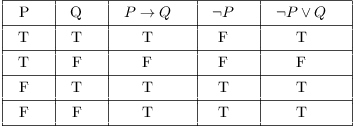
P q r p q truth table. Truth tables for compounds of great complexity having more than one truth functional operator can be constructed by computers. So we have a symbol for it. Want to see this answer and more?.
Truth Table Generator This tool generates truth tables for propositional logic formulas. P q r p → q p∨ r r → T T T T T T → T T F T T F T F T F T T T F F F T F → F T T T T T F T F T F F → F F T T T T F F F T F F This is clearly not a valid argument - as stated above, if the victim had money in their pockets, and the motivation of the crime was robbery. To test for entailment).
Knowing truth tables is a basic necessity for discrete mathematics. R = "Calvin Butterball has purple socks". Truth table for Exclusive Or p q p q T T F T F T F T T F F F Actually, this operator can be expressed by using other operators:.
Again, a truth table is the simplest way. In this case, that would be p, q, and r, as well as:. We list the truth values according to the following convention.
The are 2 possible conditions for each variable involved. We start by listing all the possible truth value combinations for A , B , and C. Now, our final goal is to be able to fill in truth tables with more compound statements which have more than just one logical connective in them.
The premises in this case are \(P \imp Q\) and \(P\text{.}\). Set up your table. You need to have your table so that each component of the compound statement is represented, as well as the entire statement itself.
The truth table is:. The truth value of the compound statement P \wedge Q is only true if the truth values P and Q are both true. Notice how the first column contains 4 Ts followed by 4 Fs, the second column contains 2 Ts, 2 Fs, then repeats, and the last column alternates.
\(\left(p \vee q\right) \wedge \neg r\) Step 1:. Remember that an argument is valid provided the conclusion must be true given that the premises are true. It’s obvious that ~ (p → q) and p ∧ ~q always share the same truth tables, so they are logically equivalent.
The table for “p or q” would appear thus (the sign ∨ standing for “or”):. A) Show that p #p is logically equivalent to :p. •How about p q and p q?.
Else the statement will always be false. Construct a truth table for p ( q r ) Line No. ↓ I, A variables in alphabetical order ↓ III, A First line all T → p:.
A truth table lists all possible combinations of truth values. I am having a little trouble understanding proofs without truth tables particularly when it comes to → Here is a problem I am confused with:. Then.” (In the “or” table, for example, the second line reads, “If p is true and q is false, then p ∨ q is true.”) Truth tables of much greater complexity, those with a number of.
You can enter multiple formulas separated by commas to include more than one formula in a single table (e.g. The statement contains 'and', so the statement will be true when both the statements are true. A sentence of the language of propositional logic is a tautology (logically true) if and only if the main column has T in every line of the truth value (that is, if and only if the sentence is true in any L.
What is the truth table for (p->q) ^ (q->r)-> (p->r)?. This is just the truth table for \(P \imp Q\text{,}\) but what matters here is that all the lines in the deduction rule have their own column in the truth table. Construct a truth table for "if ( P if and only if Q) and (Q if and only if R), then (P if and only if R)".
We can also express conditional p ⇒ q = ~p + q Lets check the truth table. Notice in the truth table below that when P is true and Q is true, P \wedge Q is true. Table of Logical Equivalences Commutative p^q ()q ^p p_q ()q _p Associative (p^q)^r ()p^(q ^r) (p_q)_r ()p_(q _r) Distributive p^(q _r) ()(p^q)_(p^r) p_(q ^r) ()(p_q.
Just use a truth table. Here, we will find all the outcomes for the simple equation of ~p Λ q. The truth or falsity of P → (Q∨ ¬R) depends on the truth or falsity of P, Q, and R.
(4pts) Suppose you are given the following truth table p q r F F F T F F T F F T F T F T T F T F F T T F T T T T F F T T T F Now give the disjunctive normal form corresponding to this table. Here is another example of a truth table, this time for $(\neg p \leftrightarrow \neg q) \leftrightarrow (q \leftrightarrow r)$:. P q is the same as :.
A truthtableshows how the truth or falsity of a compound statement depends on the truth or falsity of the simple statements from which it’s. The truth table above shows that (p q) p is true regardless of the truth value of the individual statements. \(p \vee q\) \(\neg r\).
P → ( q → r ) and ( p → q ) → r p q r p → q q → r p → ( q → r ) ( p → q ) → r T T T T T T T T T F T F F F T F T F T T T T F F F T T T. Math\begin{array}{ccc|ccccccccccccccc}p&q&r&p \supset q&q\supset r&(p \supset. When you build a truth table, you what?.
JustAnswer is not responsible for Posts. Name Represented Meaning Negation ¬p “not p” Conjunction p∧q “p and q” Disjunction p∨q “p or q (or both)” Exclusive Or p⊕q “either p or q, but not both. We need eight combinations of truth values in \(p\), \(q\), and \(r\).
Prove by contradiction the following proposition:. The truth table has 4 rows to show all possible conditions for 2 variables. Xy = 0, Q:.
Show :(p!q) is equivalent to p^:q. Therefore, (p q) p is a tautology. You present all the possible circumstances for an argument.
Step-by-step answers are written by subject experts who are available 24/7. If P then Q P. Y = 0 have various truth values, but the statement \(P \Leftrightarrow (Q \vee R)\) is always true.
Connectives are used for making compound propositions. You can enter logical operators in several different formats. Questions are typically answered within 1 hour.* Q:.
~(p v q) is the inverse of (p v q) if a variable is true, then "not" that variable is false. Write a truth table for:. This shows that “p or q” is false only when both p and q are false.
I, B number of lines. B) Show that (p #q) #(p #q) is logically equivalent to p^q. (¬p ∨ q) ∧ (q → (¬r ∧ ¬p)) ∧ (p ∨ r) is a contradiction.
If a, b ∈ Z, then a2 − 4b ≠ 2. Conditional Statement Let p and q be propositions. A truth table is a way to visualize all the possibilities of a problem.
The logical properties of the common connectives may be displayed by truth tables as follows:. + an = rwhere r is a. Is used often in CSE.
It helps to work from the inside out when creating truth tables, and create tables for intermediate operations. X = 0 and R:. For example, the compound statement P → (Q∨ ¬R) is built using the logical connectives →, ∨, and ¬.
(2pts) Show that (p ∨ q) ∧ (¬ p ∨ r. P→ q ≡¬p∨q by the implication law (the first law in Table 7.) ≡q∨(¬p) by commutative laws ≡¬(¬q)∨(¬p) by double negation law. The conditional statement p q, is the proposition “if p, then q.” The truth value of p q is false if p is.
Truth Table •The truth table for p q is as follows:. Conditional If p then q p→q Converse If q then p q→p Inverse If ∼p then ∼q ∼p→∼q. In the two truth tables I've created above, you can see that I've listed all the truth values of p, q and r in the same order.This is so that I can compare the values in the final column in the two truth tables without worrying about whether or not I am matching up the right rows - because the rows are already in the same order, I can just compare the final column of one table with the final.
Show that each conditional statement is a tautology without using truth tables b p !(p_q) p !(p_q) :p_(p_q) Law of Implication (:p_p)_q Associative Law T_q Negation Law T Domination law 2. In the examples below, we will determine whether the given statement is a tautology by creating a truth table. The main ones are the following (p and q represent given propositions):.
Statements like q→~s or (r∧~p)→r or (q&rarr~p)∧(p↔r) have multiple logical connectives, so we will need to do them one step at a time using the order of operations we defined at the beginning of this lecture. P q p q T T T T F F F T F F F F 14. Let B be the statement q ↔ r.
C Xin He (University at Buffalo) CSE 191 Discrete Structures 17 / 37. (b) Suppose statements A and B are both…. C) Since problem 44 shows that :and ^form a func-tionally complete collection of logical operators, and each of these can be written in terms of #, therefore #by itself is a.
Use a truth table to show that \(p \wedge q) \Rightarrow r \Rightarrow \overline{r} \Rightarrow (\overline{p} \vee \overline{q})\ is a tautology. Solution for Let A be the statement p → (q ∧ ¬r). (3 Marks) i) p→ (~ q ∨ ~ r) ∧ (p ∨ r) ii) p→(~ r ∧ q) ∧ (p ∧ ~ q) Get the answers you need, now!.
Each row of the truth table contains one possible configuration of the input variables (for instance, P=true Q=false), and the result of. The conditional p ⇒ q can be expressed as p ⇒ q = ~p + p Truth table for conditional p ⇒ q For conditional, if p is true and q is false then output is false and for all other input combination it is true. (a) Construct truth tables for A and B.
Find the number of non-negative integer solutions of the equation:a1 + a2 +. P q :q p!q :(p!q) p^:q T T F T F F T F T F T T F T F T F F F F T T F F Since the truth values for :(p!q) and p^:qare exactly the same for all possible combinations of truth values of pand q, the two propositions are equivalent. Use the truth tables method to determine whether the formula:.
Since I was given specific truth values for P, Q, and R, I set up a truth table with a single row using the given values for P, Q, and R:. In the first column for the truth values of \(p. For example, the propositional formula p ∧ q → ¬r could be written as p /\ q -> ~r, as p and q => not r, or as p && q -> !r.
Truth Table Generator This page contains a JavaScript program which will generate a truth table given a well-formed formula of truth-functional logic. Make truth table for followings:. The compound statement (p q) p consists of the individual statements p, q, and p q.
In which · signifies “and” and ⊃ signifies “if. I discuss how to determine the truth values of the components (number of rows) and h. Build a truth table containing each of the statements.
A truth table has one column for each input variable (for example, P and Q), and one final column showing all of the possible results of the logical operation that the table represents (for example, P XOR Q). (¬ p ∧ ¬ q ∧ ¬ r) ∨ (¬ p ∧ q ∧ ¬ r) ∨ (p ∧ ¬ q ∧ ¬ r) ∨ (p ∧ ¬ q ∧ r). Disjunction Truth Table ( r v p ), Or v Biconditional Truth Table ( b<-> s ) (triple bar)iff Negation Truth Table ~p Conditional Truth Table ( P⊃ Q ) P->Q if P, then Q.
Notice that when we plug in various values for x and y, the statements P:. Number of solutions of a1+a2. This will always be true, regardless of the truths of P, Q, and R.
Now the statement p ∧ (r → ~ q) is calculated. We investigate the truth table for the more complicated logical form ~p V ~q ***** YOUR TU. Therefore, the statement is true.
Construct the truth table for the following compound proposition. Since there are 2 variables involved, there are 2 * 2 = 4 possible conditions. Discrete Mathematics I (Fall 14) d (p^q) !(p !q) (p^q) !(p !q) :(p^q)_(p !q) Law of Implication :(p^q)_(:p_q) Law of Implication.
Truth (T) and falsehood (F).Given two statements p and q, there are four possible truth value combinations, that is, TT, TF, FT, FF.As a result, there are four rows in the truth table. I want to determine the truth value of. Determine whether the following statement forms are logically equivalent.
Ø(P →(Q →R)) →(P ∧ Q →R) Using a partial truth table I will šnd out whether (P → (Q → R)) → (P ∧Q → R) is a tautology. Otherwise, P \wedge Q is false. This is another way of understanding that "if and only if" is transitive.
Sentences P and Q of SL are truth-functionally equivalent if and only if there is no truth-value assignment on which P and Q have different truth-values. The resulting table gives the true/false values of \(P \Leftrightarrow (Q \vee R)\) for all values of P, Q and R. \begin{array}{ccc|cccc|c} p & q & r & \neg p & \neg q & \neg p \leftrightarrow \neg q & q \leftrightarrow r & (\neg p \leftrightarrow \neg q) \leftrightarrow (q \leftrightarrow r) \\\hline T & T & T & F & F & T & T.
(0 points), page 35, problem 18. (p $ q ). However, the other three combinations of propositions P and Q are false.
Show that (p ∧ q) → (p ∨ q) is a tautology The firs. ~(p ^ q) V (p V q) - Answered by a verified Tutor. We can see that the result p ⇒ q and ~p + q are same.
In a two-valued logic system, a single statement p has two possible truth values:. Information in questions, answers, and other posts on this site ("Posts") comes from individual users, not JustAnswer;. In this video, we set up a truth table for the given compound statement.
P (q r) 1:. Regardless of the truth of P (as long as P is not both true and false!), this is always false. Construct the truth table for the statements (pVq) V (~p^q) → q p q ~p p V q ~p ^ q (p V q) V (~p ^ q) (p V q) V (~p ^ q) → q T T F T F T T T F F T F T F F T T T T T T F F T F F F T Problem 18:.
Q Tbn 3aand9gcr2oxnmnlu9pdclqvbtg6glfskyfgzj1 Hn4uchqb7nttyoluij Usqp Cau
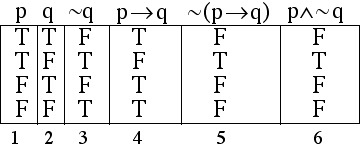
Negation

Logic Truth Tables Worksheet Printable Worksheets And Activities For Teachers Parents Tutors And Homeschool Families
P Q R P Q Truth Table のギャラリー
Www Studocu Com En Nz Document Islamic University Of Technology Discrete Mathematics Other Discrete Math Solution K Rosen7e View
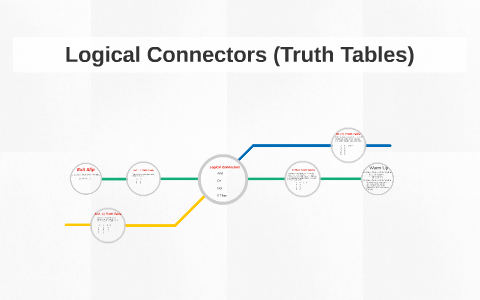
Logical Connectors Truth Tables By Adam Sullivan
Www3 Cs Stonybrook Edu Pfodor Courses Cse215 L03 Propositionallogic Pdf

2 Construct The Truth Tables For The Following Propositions 1 P P Q 2 P Q Q P 3 P Q R 4 P Q P R 3 Refer To The Propositions In Problem 2 For Each Of Them Indicate Whether It Study Com
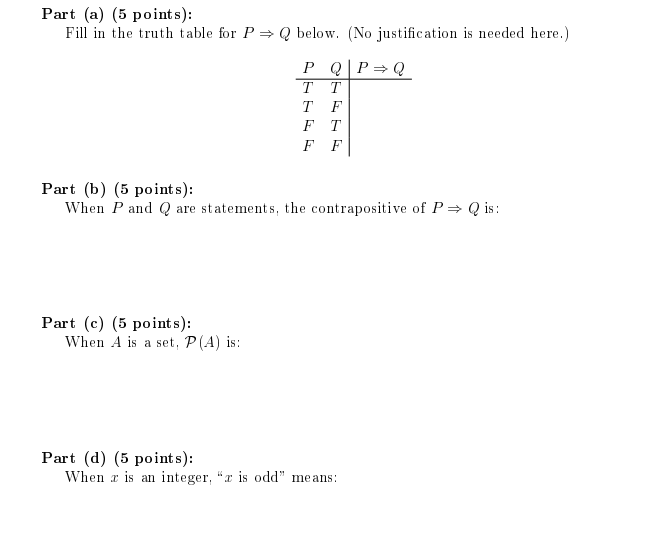
Part A 5 Points Fill In The Truth Table For P Chegg Com

Logic Easing The Hurry Syndrome

Watson

Prepare The Truth Table Of The Following Statement Patterns I P Q Q P Ii P Q P Iii P Q P Q Iv P R Q P V P Q R P

Negative Statements Ck 12 Foundation
Www Uplifteducation Org Cms Lib Tx Centricity Domain 291 Logic Practice 18 key Pdf

Watson
2

Truth Tables On Ti Nspire Cx Math Tables On Ti Nspire Cx We Use 1 For T And 0 For F To Create The Truth Table Pq P Q Pq

Truth Tables Pdf Contradiction Syntax Logic
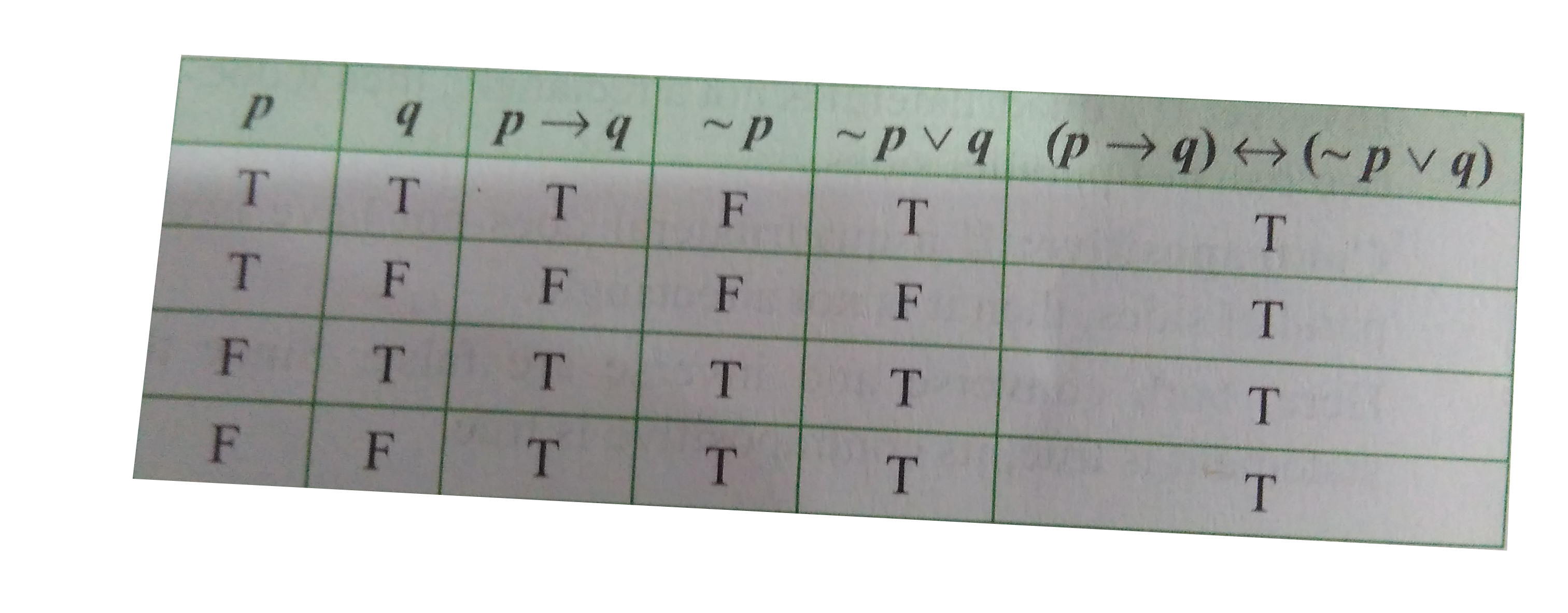
In The Truth Table For The Statements P To Q Harr P Vvq T

Propositional Logic Foundations Of Logic Overview Propositional Logic Basic Definitions 1 1 Equivalence Rules Derivations 1 2 Ppt Download

P Q P Q Prove Contradiction
2

Truth Tables Tautologies And Logical Equivalences

Lecture Notes In Discrete Mathematics Marcel B Finan Arkansas Tech University C All Rights Reserved Pdf Free Download

Truth Table For Compound Statements Youtube
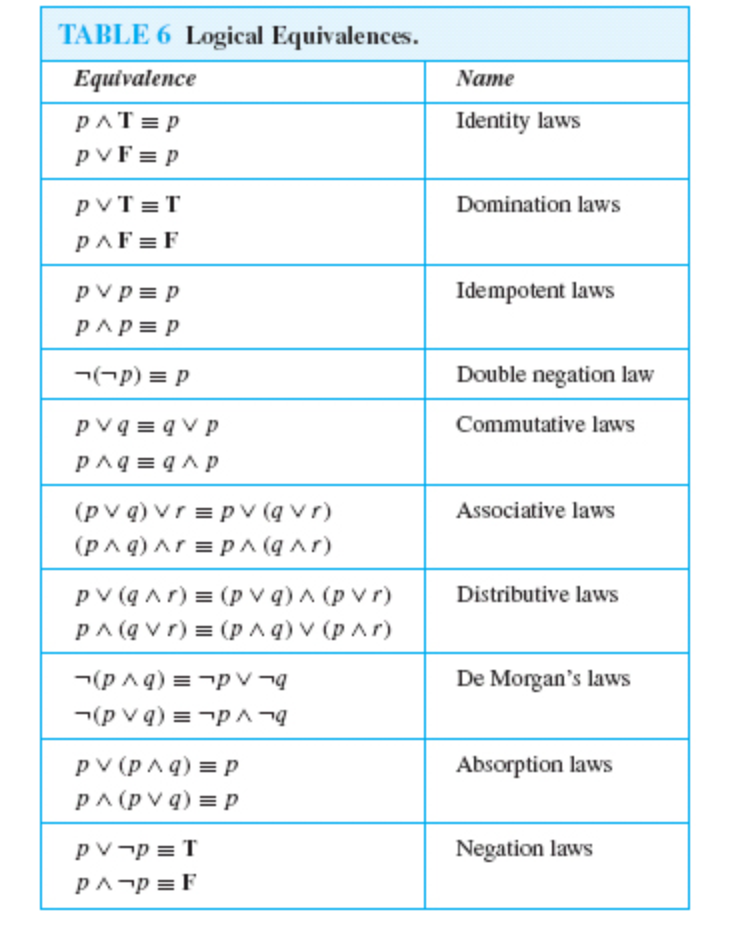
Solved Show That Q P P Q Is A Tautology I E Q Chegg Com

Truth Table Youtube

M02 1 13 1 Consider The Statement If A Figure Is A Square 1 Consider The

The Normal Genius Truth Tables

Truth Tables Pdf Contradiction Syntax Logic

Truth Tables Tautologies And Logical Equivalences
Www Studocu Com En Nz Document Islamic University Of Technology Discrete Mathematics Other Discrete Math Solution K Rosen7e View
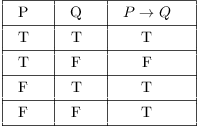
Truth Tables Tautologies And Logical Equivalences
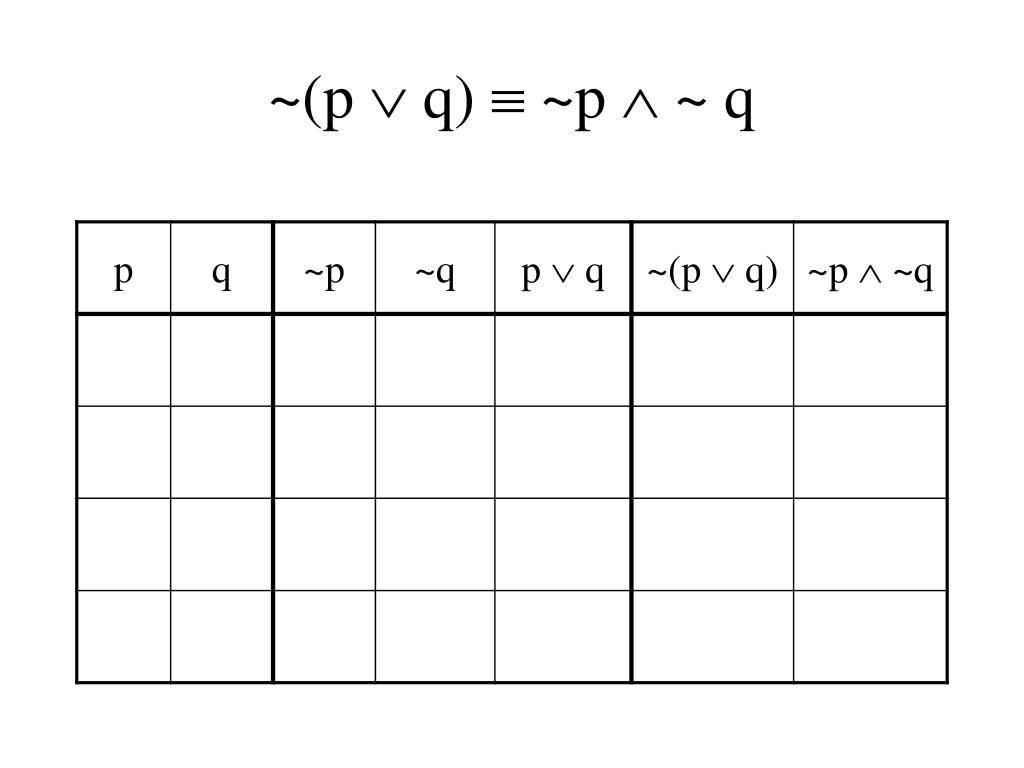
Ppt Logical Form And Logical Equivalence Powerpoint Presentation Free Download Id

Dm1
Solution To Example 1
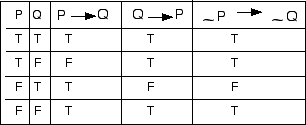
The Normal Genius Truth Tables

Proof And Problem Solving Truth Table Example 01 Youtube

Mathematical Logic Part 2

Logic Truth Tables Worksheets Printable Worksheets And Activities For Teachers Parents Tutors And Homeschool Families

Watson

Dm1

Truth Tables Tautologies And Logical Equivalences
Q Tbn 3aand9gcrrfsogu1iqmpiv56dv5oa B Pi06bmmekjofsoz Uze Prhwzl Usqp Cau

Truth Table

Cpcs222 Discrete Structures I Ppt Download
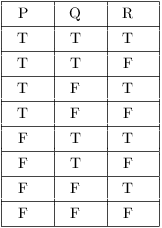
Truth Tables Tautologies And Logical Equivalences
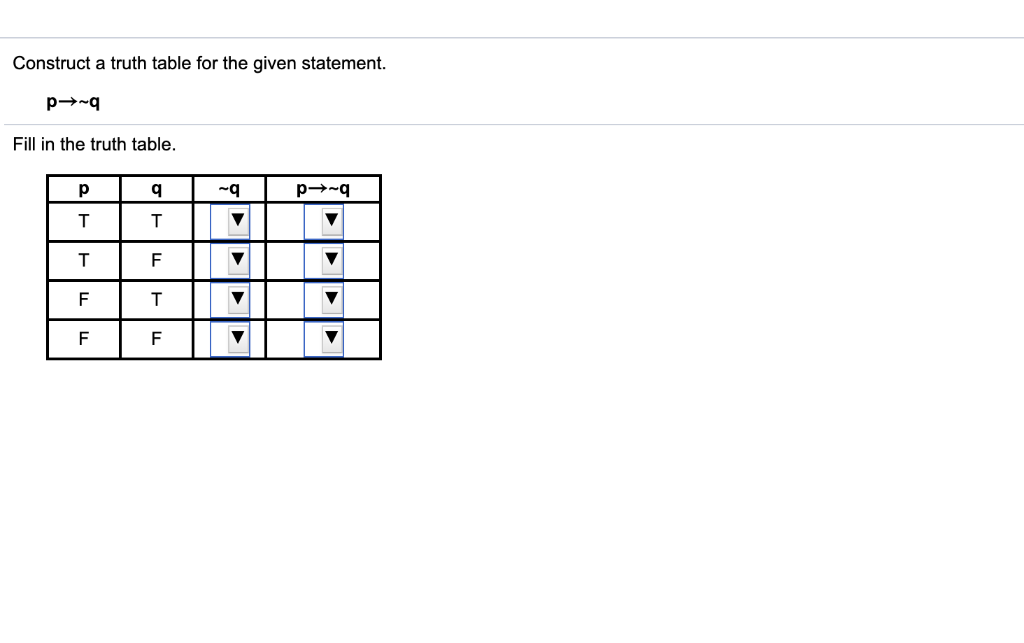
Solved Construct A Truth Table For The Given Statement P Chegg Com

Truth Table Docx Partial Credit 3 2 66 A Construct A Truth Table For The Compound Statement Left Parenthesis Q Logical And P Right Parenthesis Logical Course Hero

Abcd Truth Table Worksheet Printable Worksheets And Activities For Teachers Parents Tutors And Homeschool Families
Q Tbn 3aand9gctl2zcptshv3iyzy8meoqsjchgvcibdk4dy7nnneafmqmi2cwbv Usqp Cau
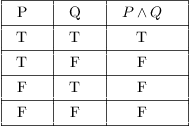
Truth Tables Tautologies And Logical Equivalences

The Foundations Logic And Proof Sets And Foundations Propositions A Proposition Is A Declarative Sentence That Is Either True Or False But Not The Ppt Download

Tautology In Math Definition Examples Video Lesson Transcript Study Com
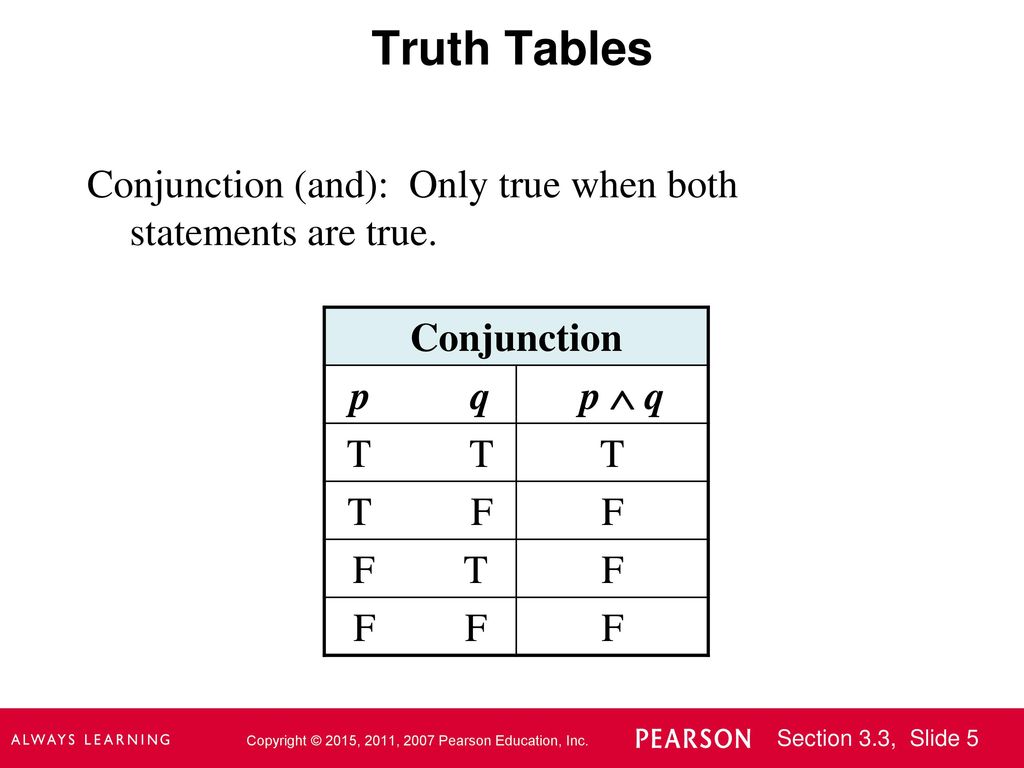
Chapter 3 Logic Ppt Download

50 P Q P Q P Q P Q De Morgans Laws The Truth Table For P Q P Q Theorem For Course Hero

Abcd Truth Table Worksheet Printable Worksheets And Activities For Teachers Parents Tutors And Homeschool Families

Logic Easing The Hurry Syndrome
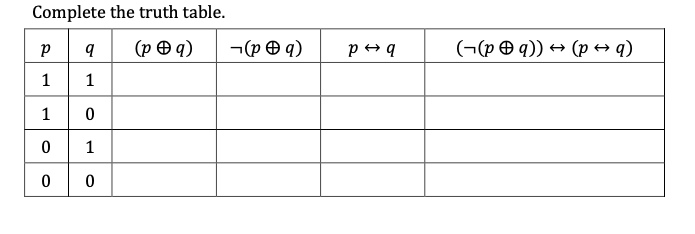
Solved Complete The Truth Table Pa P 9 1 1 9 Pa P Chegg Com
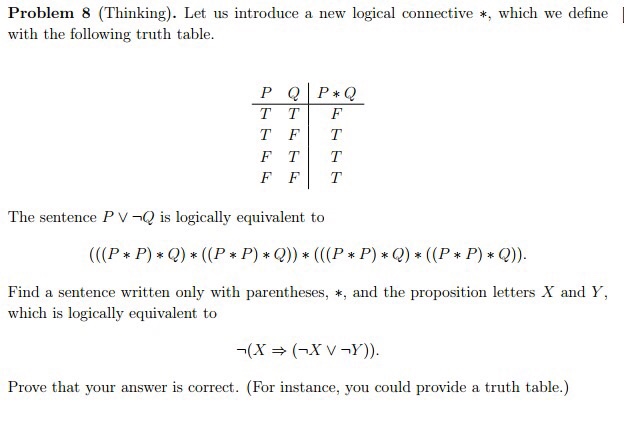
Solved Problem 8 Thinking Let Us Introduce A New Logic Chegg Com
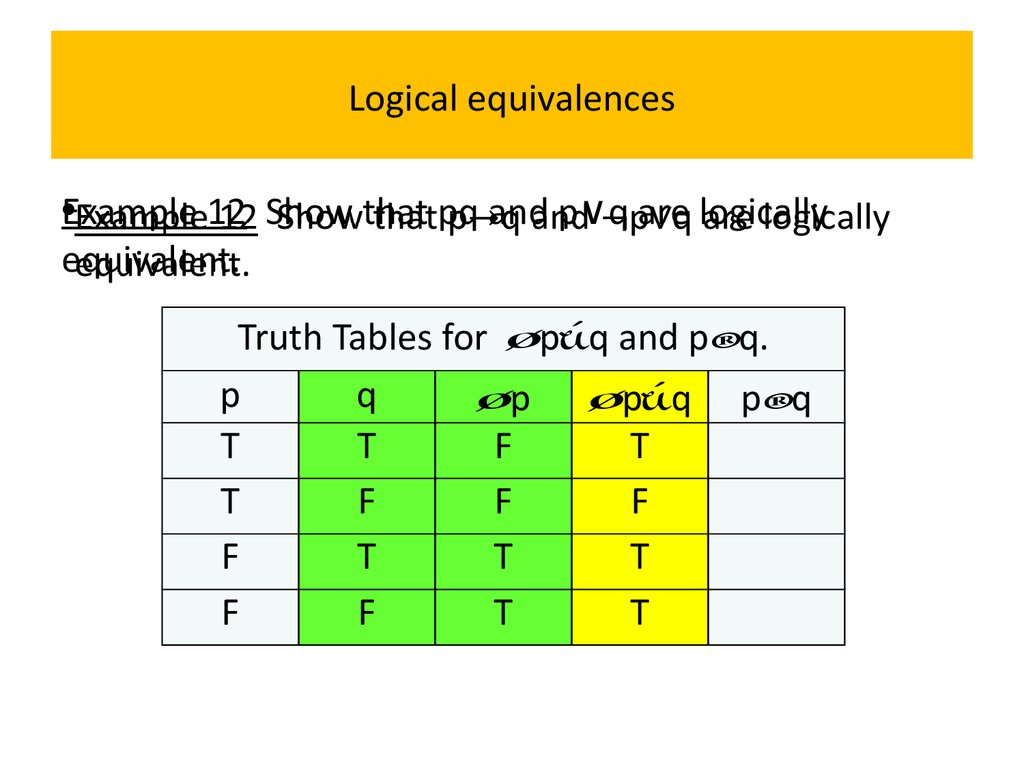
Propositional Logic Prezentaciya Onlajn
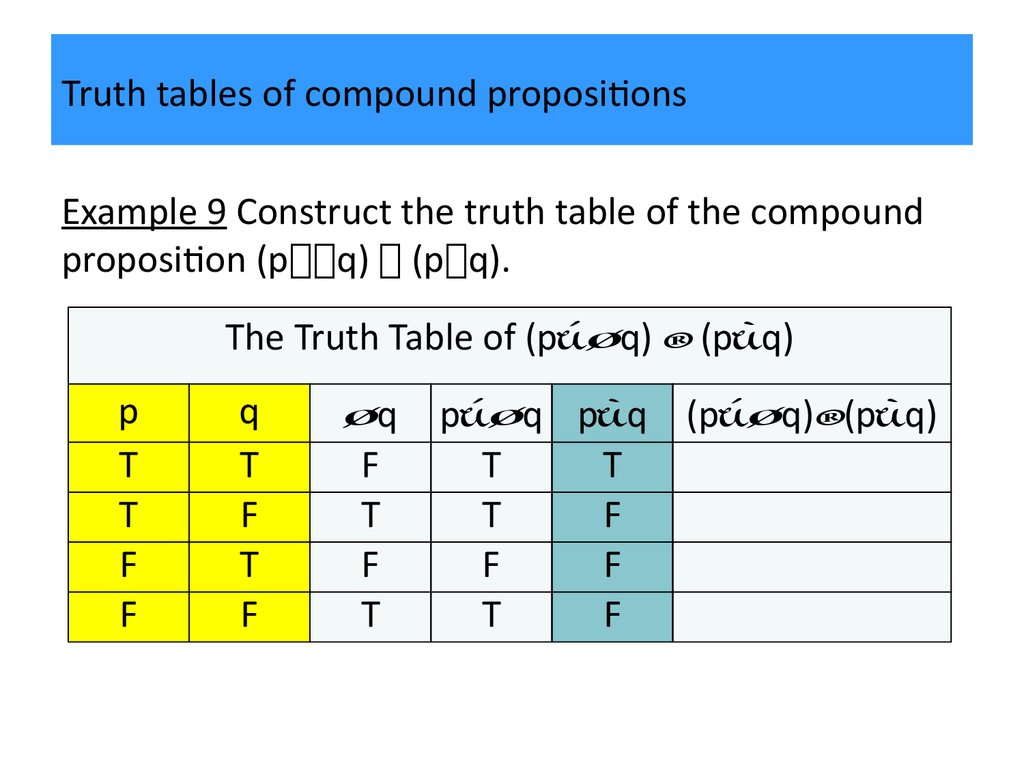
Propositional Logic Prezentaciya Onlajn

Abcd Truth Table Worksheet Printable Worksheets And Activities For Teachers Parents Tutors And Homeschool Families
1

Truth Tables On Ti Nspire Cx Math Tables On Ti Nspire Cx We Use 1 For T And 0 For F To Create The Truth Table Pq P Q Pq
2

Logic Truth Tables Worksheets Printable Worksheets And Activities For Teachers Parents Tutors And Homeschool Families
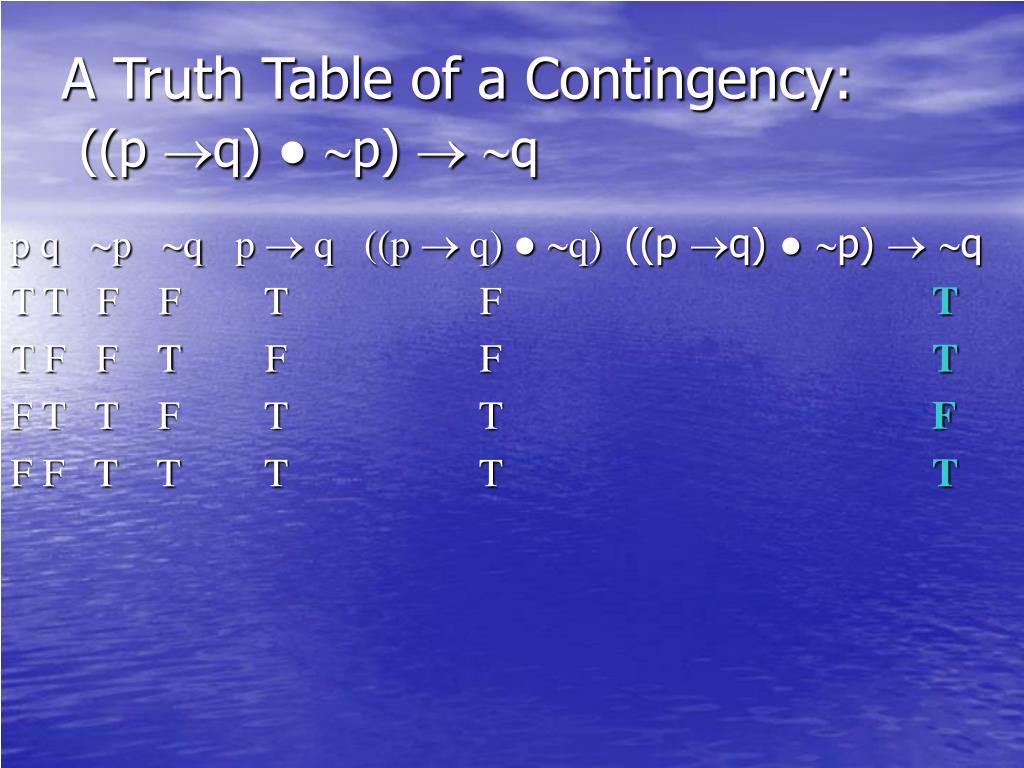
Ppt Philosophy 150 Day 12 Using Truth Tables Part 1 Powerpoint Presentation Id
Www Uplifteducation Org Cms Lib Tx Centricity Domain 291 Logic practice problems key Pdf

The Normal Genius Truth Tables
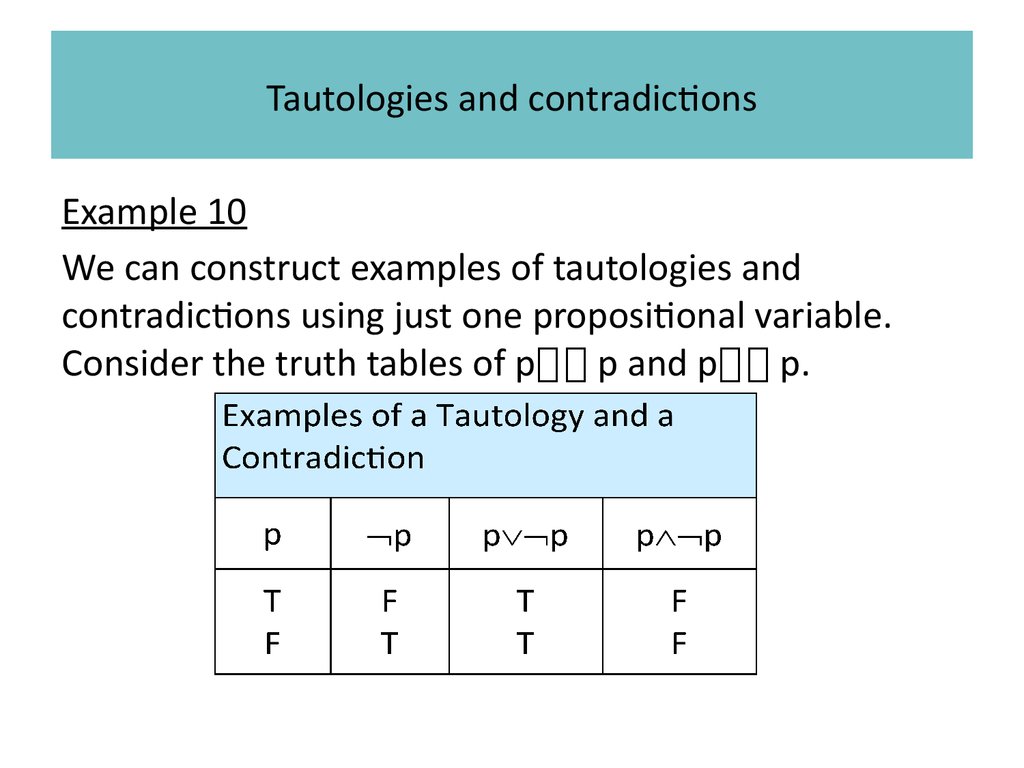
Propositional Logic Prezentaciya Onlajn

Dm1

Truth Tables For Compound Statements Youtube
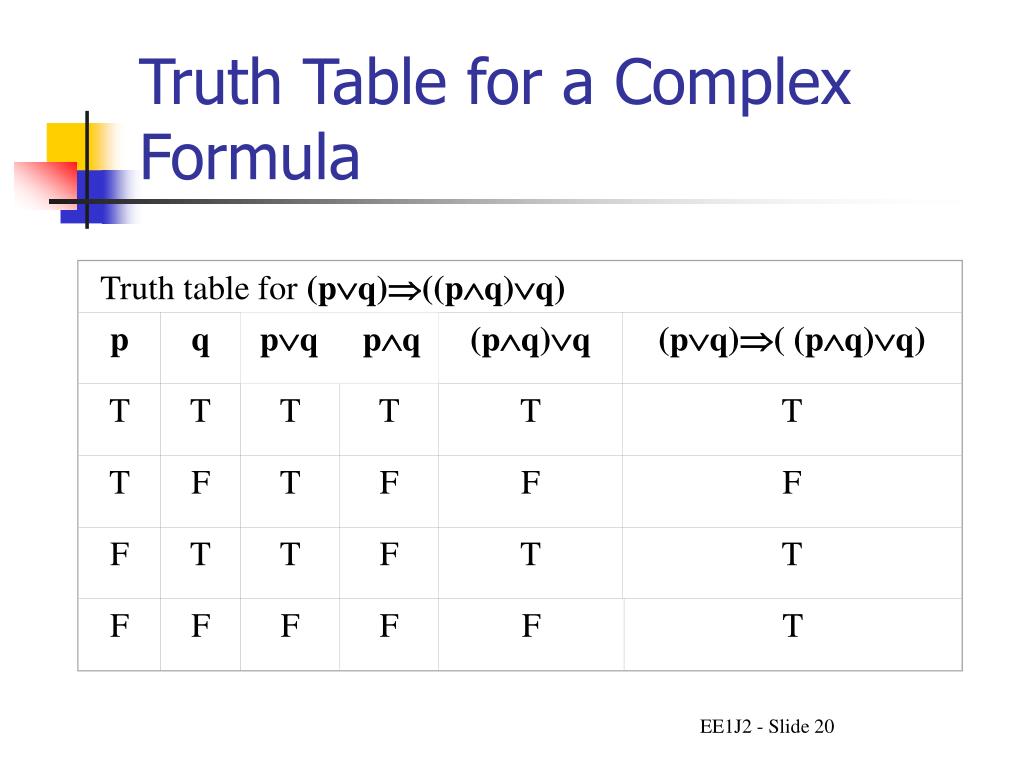
Ppt Ee1j2 Discrete Maths Lecture 3 Powerpoint Presentation Free Download Id
Http Storm Cis Fordham Edu Zhang Cs2100 Slides Logic Handout Pdf

Table 2 From Two Results On Zfc 1 If Zfc Is Consistent Then It Is Deductively Incomplete 2 Zfc Is Inconsistent Semantic Scholar

Propositional Logic Proposition A Proposition Is A
2
Http Eng Usf Edu Hady Courses Mgf1106 Documents Slides 3 3 Pdf
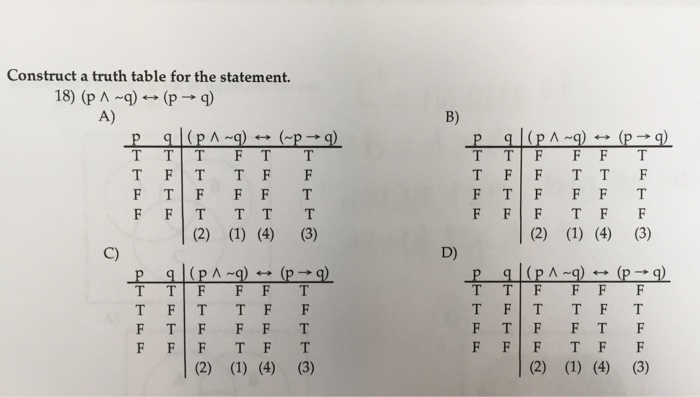
Solved Construct A Truth Table For The Statement P Q Chegg Com
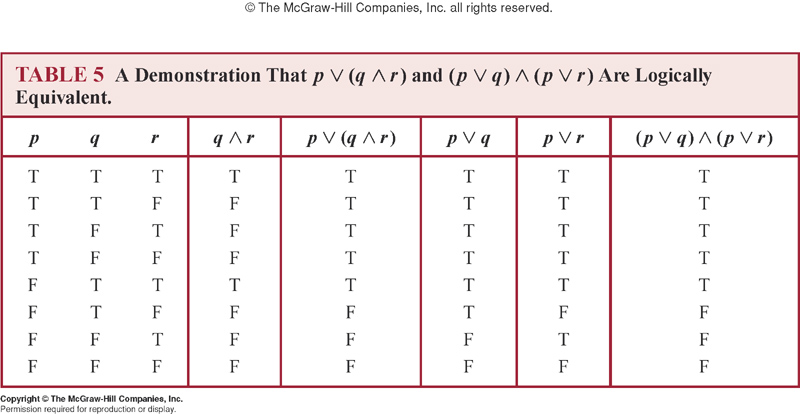
Philosophy Into To Logic Brooke Byun

Unit 1 Mathematical Logic Introduction Logic We

8 6 Testing Argument Validity Using Truth Tables Pages 1 3 Text Version Fliphtml5

Logic Truth Tables Worksheets Printable Worksheets And Activities For Teachers Parents Tutors And Homeschool Families

Logic Propositions

Logic Truth Tables Worksheet Printable Worksheets And Activities For Teachers Parents Tutors And Homeschool Families
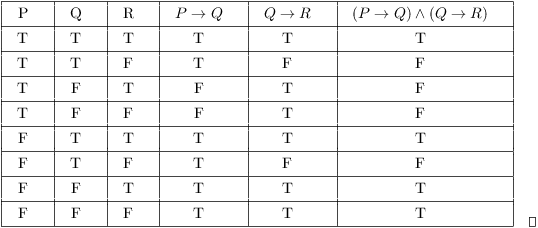
Truth Tables Tautologies And Logical Equivalences
2

Truth Value Logic Britannica
Www Uplifteducation Org Cms Lib Tx Centricity Domain 291 Logic practice problems key Pdf

M02 1 13 1 Consider The Statement If A Figure Is A Square 1 Consider The

Propositional Logic Proposition A Proposition Is A

Pvq Q P Pv 7 Fill In The Truth Table For The Statement Below Homeworklib
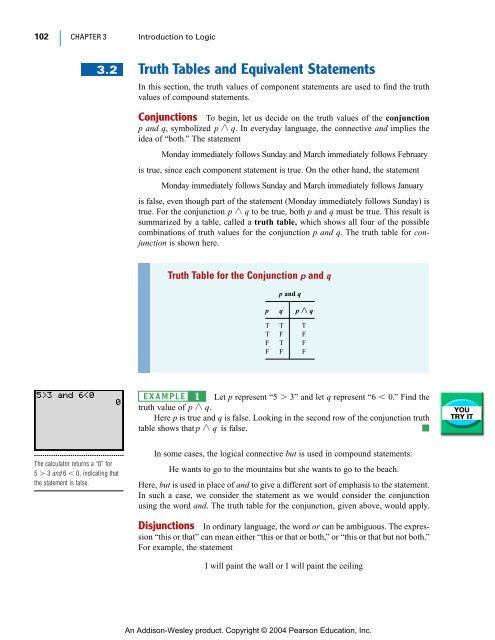
Truth Tables And Equivalent Statements

Logic Truth Tables Worksheet Printable Worksheets And Activities For Teachers Parents Tutors And Homeschool Families

Chapter 1 Use The Following To Answer Questions 1 5 In The Questions Below Determine Whether The Proposition Is True Or False Pdf Free Download

Iff Truth Table

Propositional Logic A Proposition Is A Declarative Sentence A Sentence That Declares A Fact That Is Either True Or False But Not Both Pdf Free Download

Solution How Do You Write A Truth Table For The Statement Form P Q V Pvq

Prove That Neg P Wedge Q Leftrightarrow Neg P Vee Neg Q Using Truth Table Mathematics Stack Exchange

Undefined Control Sequence In A Table Tex Latex Stack Exchange

Boolean Tables Worksheet Printable Worksheets And Activities For Teachers Parents Tutors And Homeschool Families
Truth Table Generator Pypi

Solved Use Truth Tables To Prove B C D E F G H And I Chegg Com

Simplify Equivalent For P Q P Q Mathematics Stack Exchange




